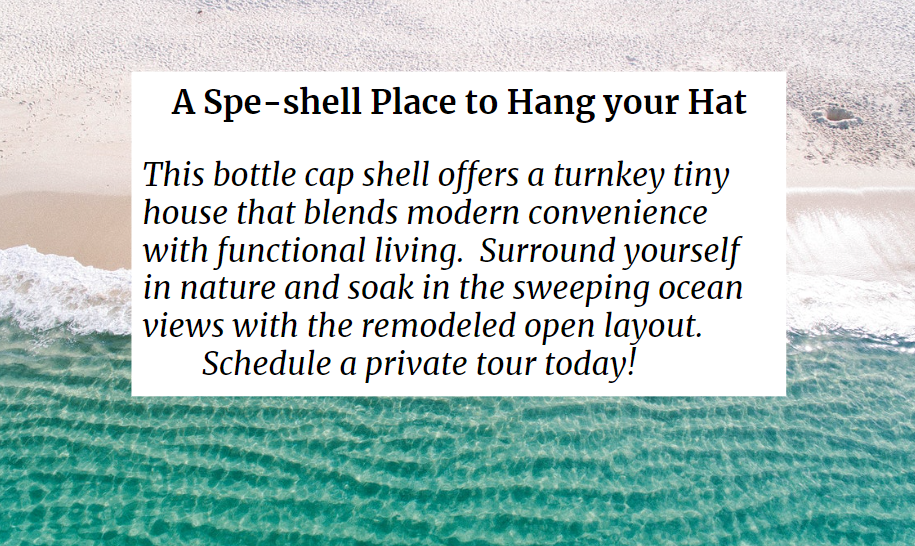Lately, I’ve been interested in what educators do to invite playfulness in the classroom. When we create conditions for playful experimentation, we can lower the stakes for communicating about a serious topic. In fact, we may lower an entire drawbridge, allowing students to enter into an imaginative space previously regarded as a formidable realm, where they can explore materials for arming themselves and disarming themselves, however they wish.

This type of safe space brings to mind other creatures who armor themselves. Consider the hermit crab. Born without protection for its soft, exposed abdomen, the hermit crab spends its life inhabiting empty shells abandoned by snails and other mollusks. In honor of these perpetually shell-seeking creatures, Brenda Miller and Suzanne Paola dubbed a particular form of lyric essay the “hermit crab” essay–a type of essay that appropriates an existing form. Exploring material that is “soft, exposed, and tender,” Miller and Paola explain, a writer may “look elsewhere to find the form that will best contain it.”
Familiarizing students with the text structure of the borrowed forms builds confidence. Instead of feeling like a writer meandering helplessly, the model text acts as an invitation to be playful, but within given parameters.
To help students weigh possibilities existing with borrowed forms, I made a list of familiar forms from which I sought mentor text examples.

Hermit Crab Essay Mentor Texts
- How-to Article: Lorrie Moore’s “How to Become a Writer”
In her debut story collection Self-Help, Moore included a series of “How-To” pieces, employing the the step-by step style used in how-to articles to narrate a writer’s journey in a delightfully idiosyncratic unfolding.
The seminar doesn’t like this one either. You suspect they are beginning to feel sorry for you. They say: “you have to think about what is happening. Where is the story here?”
Though the form of the essay sets the reader up to expect a clear, upward trajectory, we soon come to realize that each step offers insight into the frequent experience of emotional deflation that comes with receiving feedback on one’s writing. Instead of offering a portrait of sure-footed success, Moore’s essay suggests the choice to become a writer serves up a different experience with inevitability: the realization that not writing would be more painful than fielding the frequent underwhelmed responses to her career choice.
- Rejection Letter: Brenda Miller’s “We Regret To Inform You”
In her 2015 essay published in Brevity Magazine, Miller offers a series of rejection letters, adopting the voice of detachment that is so representative of this type of correspondence:
Dear Young Artist:
Thank you for your attempt to draw a tree. We appreciate your efforts, especially the way you sat patiently on the sidewalk, gazing at that tree for an hour before setting pen to paper, the many quick strokes of charcoal executed with enthusiasm.
The letters are dated and sequenced for maximum effect, beginning with humorous addresses to her younger selves that elicit chuckles, which make way for letters that divulge more serious, heartrending topics. Somehow, though, the detached tone of the letters sustain a humorous thread, perhaps arising from a voice steadfastly devoid of emotion. The form of the rejection letter becomes an experimental playground where a writer can engage in deadpan confession.
- Real Estate Ad
My students love seeing how I approach the task I assign to them, so I created a hermit crab essay with a decidedly meta bent: I made a mock real estate ad directed towards a hermit crab seeking a new home. I had come across a disturbing Smithsonian article describing how hermit crabs are using trash as shells, painting a sobering picture of how human trash disposal is transforming the natural world.


The compact nature of the real estate ad – you want to capture the reader’s attention quickly – lends itself to bubbly hyperbole that in this case both reveals and conceals the devastation posed by the tiny toxic particles introduced to these organisms’ bodies through degrading plastic. Tragically, many hermit crabs who adopt these artificial homes as protective havens find themselves unable to escape them and starve to death. Much like Miller’s borrowed form, the mock real estate ad demonstrates how a serious topic can be explored in the guise of playfulness.
-Xochitl
How do you combine student writing and playfulness? What other forms can students explore with the hermit crab essay? Share your reflections in the comments below or find me on Twitter @dispatches_b222.
At Moving Writers, we love sharing our materials with you, and we work hard to ensure we are posting high-quality work that is both innovative and practical. Please help us continue to make this possible by refraining from selling our intellectual property or presenting it as your own. Thanks!
